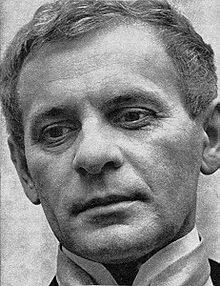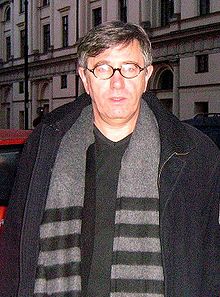Man of Marble
Man of Marble Polish Czowiek z marmuru is a 1976 Polish film directed by Andrzej Wajda. It chronicles the fall from grace of a fictional heroic Polish bricklayer, Mateusz Birkut played by Jerzy Radziwiowicz, who became the Stakhanovite symbol of an overachieving worker, in Nowa Huta, a new real life socialist city near Krakw. Agnieszka, played by Krystyna Janda in her first role, is a young filmmaker who is making her diploma film a student graduation requirement on Birkut, whose whereabouts seems to have been lost two decades later. The title refers to the propagandist marble statues made in Birkuts image. It is somewhat of a surprise that Wajda would have been able to make such a film, sub silentio attacking the socialist realism of Nowa Huta, revealing the use of propaganda and political corruption during the period of Stalinism. The film director presaged the loosening grip of the Soviets that came with the Solidarity Movement, though it has been acknowledged by Polish film historians that due to censorship the script languished in development hell since 1962. The film extensively uses original documentation footage from the construction of Nowa Huta and other subjects of Polands early communist era, as well as the propagandistinspirational music of Stalinist Poland.
Agnieszka, is a young filmmaker who is making her film thesis on Mateusz Birkut, a bricklayer elevated as a hero in a stunt to increase construction efficiency and brick quotas. However, who has since had a fall from grace of the Party and other officials. His current whereabouts seem to have been lost two decades later, and she attempts to piece together the details of his downfall. Agnieszka has difficulty making the film from archival sources and museum collections, but little work remains outside of official propaganda.Then Agnieszka goes to successful director Jerzy Burski, who recounts the details from the making of his unfinished film, Building Our Happiness. The truth behind the propaganda film comes to light, revealing how Birkut was selected as an example for demonstrating the progress and efficiency of a new industrial city Nowa Huta. Selected by Jodla, the local Party Secretary, Birkuts fame spread from the bricklaying record of 30,000 bricks in one shift launched him to stardom. Burski does not divulge much about Birkut following his initial rise, but puts her in touch with a man who knew Birkut personally. ........
Source: Wikipedia




